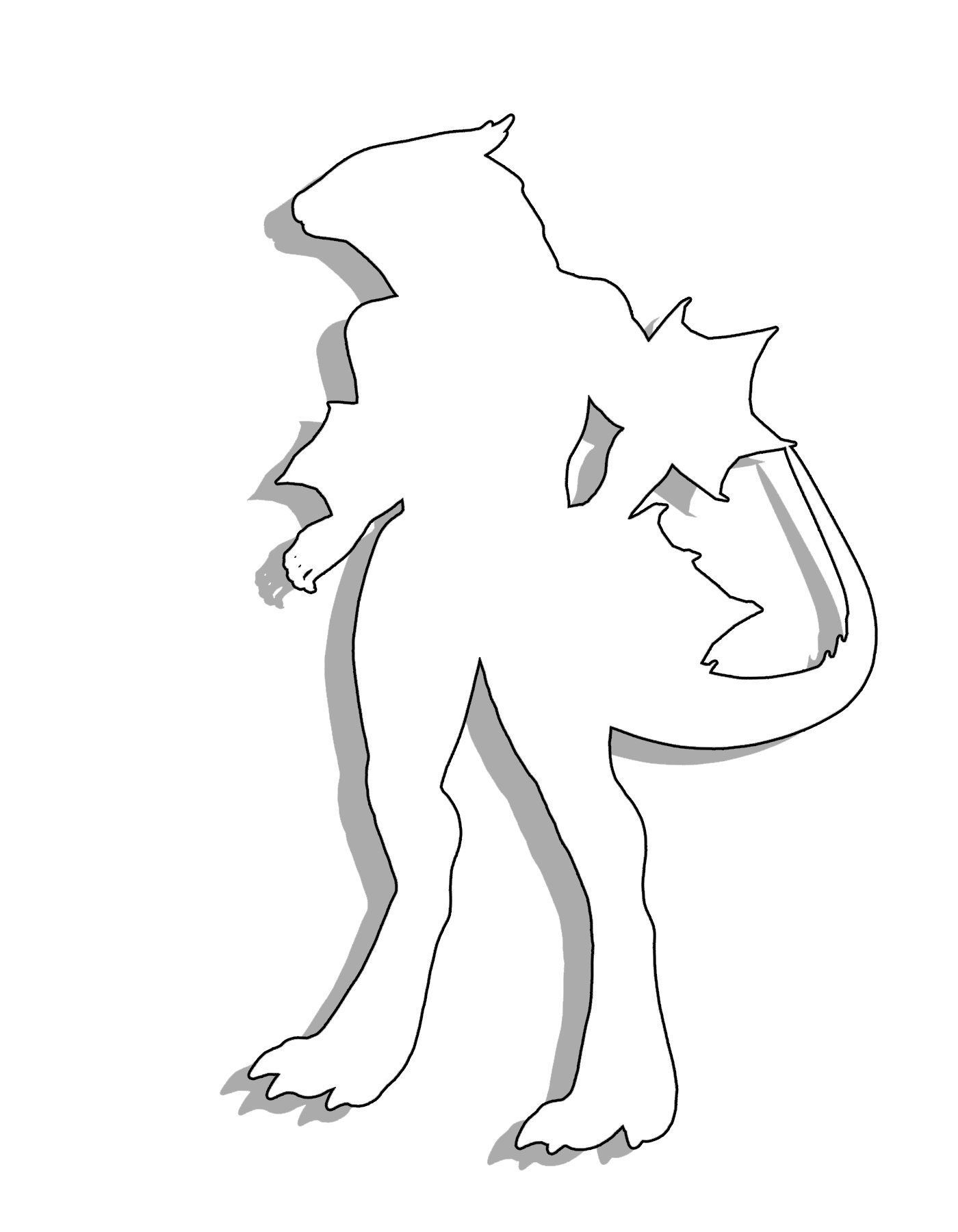
DUNESMAN
‘They of the Dunes’, or as they’re more colloquially known, the Dunesmen, are a race of bipedal lizards native to the Great Desert of Al-Nhamli of Apteros. The Dunesmen are adapted well to live in the dry heat of the desert, able to go for days without food or water by entering a sort of suspended hibernation where their heart rate slows dramatically. While the males are intimidating in appearance with stocky, powerful builds and an average height of 210cm (7′), the Dunesmen are, in reality, a peaceful people who typically avoid conflict.
Perhaps it is only logical, as fighting over resources in such a barren and hostile landscape would surely doom them to extinction.
The typical Dunesmen sports thick scales on the backs of their arms, outside of their legs and along their back and tail, with smaller, more supple ones on their faces, hands, and bellies. Their faces are made up of a blunt, wedge-shaped snout filled with sharp teeth set into their heads, from which grow small horns and spines often decorated with jewelry. They have thick, powerful necks which arch forward, making them look as if they are hunched over. Dunesmen also sport wide, flat tails that drag in the sand behind them, similar to those of an alligator or crocodile. These tails have blood vessels which can help the Dunesmen to dissipate body heat, and groups of them can often be found in the shade or near oases cooling off this way.
Dunesmen value trade and co-operation immensely, and were instrumental in helping the human refugees from the west settle in the Al-Nhamli, eventually leading to the founding of the city of Nham, the largest trade hub in all of Vaira as well as the only place in the world where all races mingle freely. While most modern Dunesmen live in Nham, or its surrounding areas, some maintain a traditional life as desert nomads.
Dunesmen have a very distinct sexual dichotomy: Males not only outnumber females by around 10 to 1, female Dunesmen are also much smaller than their male brethren, most only reaching about 120cm (4′) in height. They are similar in appearance to their male counterparts, but their snouts are shorter and they have slender builds. Unlike males, the female Dunesmen lack the tough outer scales the males have, instead sporting a variety of bright colourations on softer, more supple scales. Their tails are shorter and stubbier, often only reaching down to their knees. Despite being smaller in size, female Dunesmen are typically the authority figures for their tribes and clans.
While typically peaceful people, once yearly during their mating cycle, male Dunesmen become irritable and aggressive as a result of the flood of hormones preparing them for mating season. This time of year is known as the Feast of Blood, as Dunesmen tribes organize elaborate combat rituals as a means to prove their worth to one of the few females and acquire a mate. Even if a male cannot find a mate, days of pitched battle with his fellow suitors is usually enough to burn off most of the aggression, allowing a return to normalcy. When a male Dunesmen is lucky enough to find a mate, the next week is spent having near constant intercourse. This is the only time of year most Dunesmen will ever have sex, as the rest of the year they typically lack a sex drive altogether.





